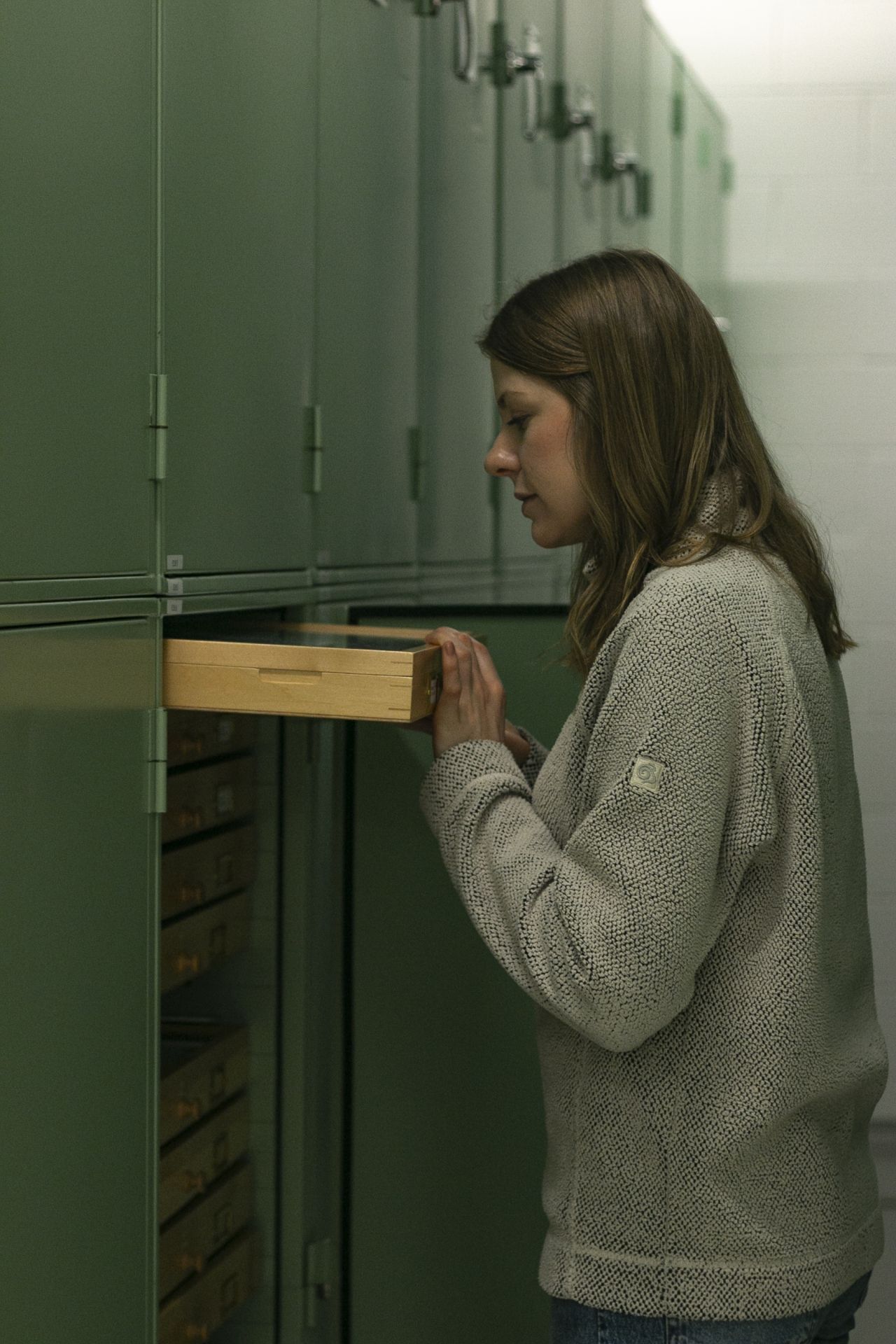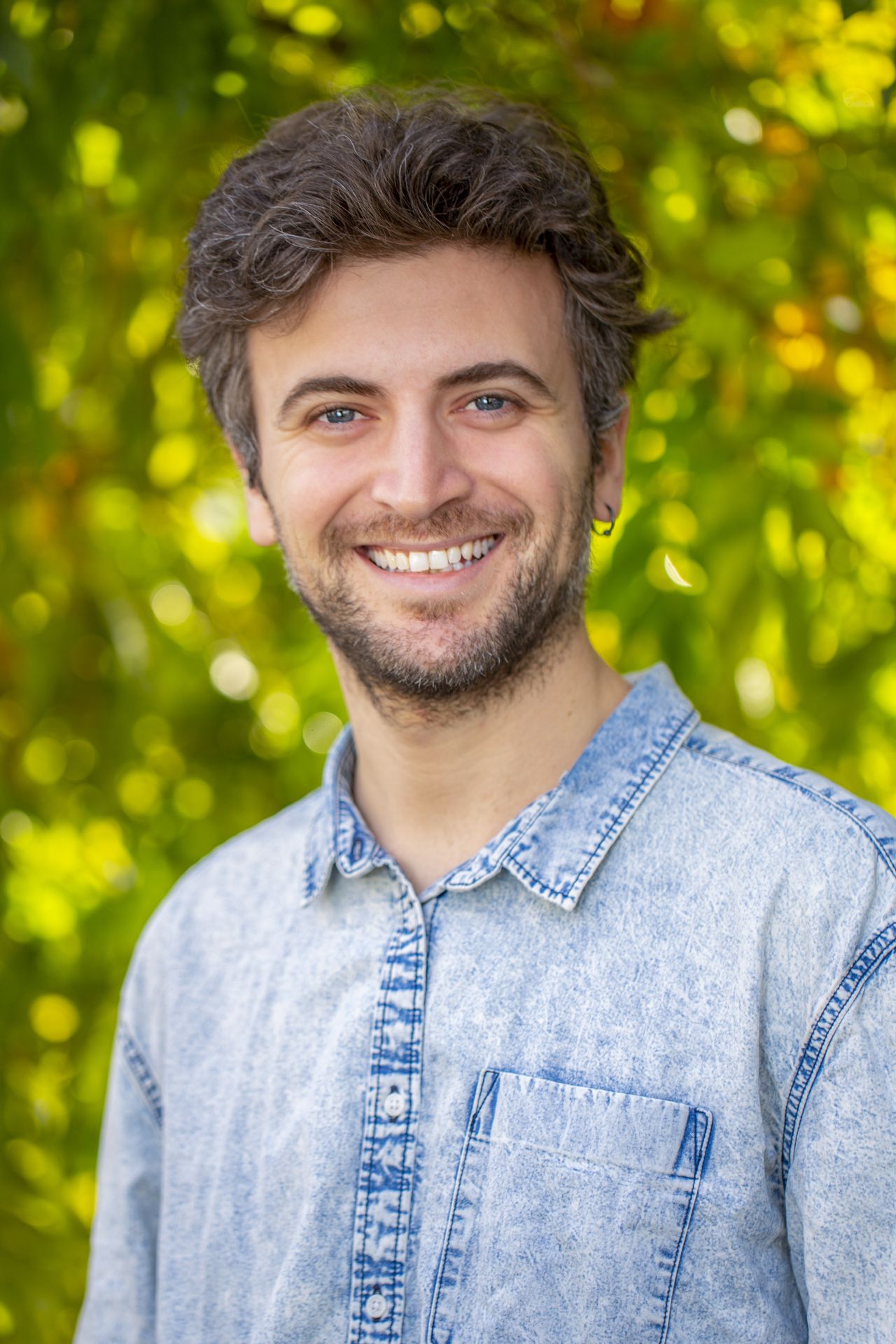Ashleigh Whiffin – Insect curator
From crime scenes to the National Museum of Scotland, the inspiring journey of an entomologist.
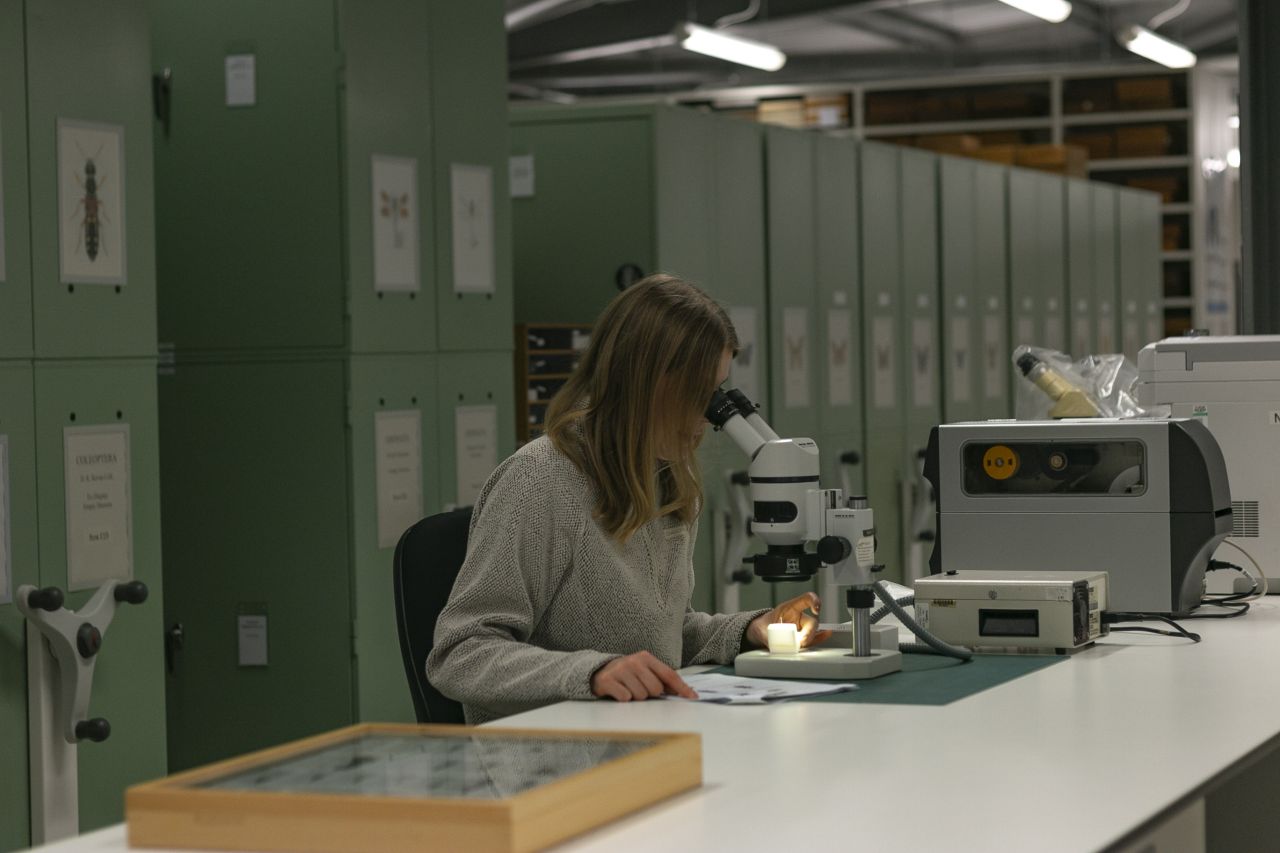
Ashleigh is examining pinned insects under a stereo microscope. Image: © Molly Wilders
An unexpected path was unfolding
Watching too many CSI series left quite a mark on Ashleigh, inspiring her to study Forensic Science at the University of Derby. Visiting mock crime scenes, collecting evidence, and analyzing it in the laboratory was definitely fun, but what truly seized her interest was studying insects growing on and inside bodies! Her first encounter with carrion beetles in a forensic entomology class was particularly memorable, as it ignited her passion for this fascinating insect group.
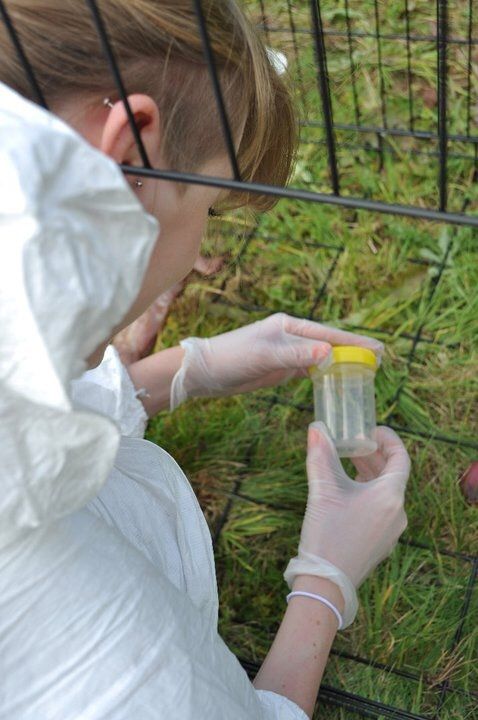
Ashleigh during her undergrad research, collecting carrion insects. Image: © David Tibble
Ashleigh studied many aspects of carrion beetles, investigating rare behaviors like parental care, which is unusual in insects. But focusing on just one insect group wasn’t enough for her – there was a whole world of insect biodiversity waiting to be explored. This led her to pursue an MSc in Entomology at Harper Adams University. In 2014, she joined the National Museum of Scotland, where she has now been working for over 10 years. If you ask her, the time has flown by!
Did you know?
Whether it’s a dead deer, bird, or human remains, carrion beetles aren’t picky when it comes to decaying flesh. In forensic entomology, they play a role – perhaps not as prominently as blow flies – but they still provide valuable clues about the postmortem interval (PMI) of a body. As they feed on the remains, the gut contents of these beetles can offer forensic scientists insight into whether drugs or toxins were present. Additionally, finding specific carrion beetles in areas where a particular species wouldn’t normally be present can suggest that a body may have been moved. There are a growing number of examples where beetle evidence has been used. An example can be found here.
What is Ashleigh’s role?
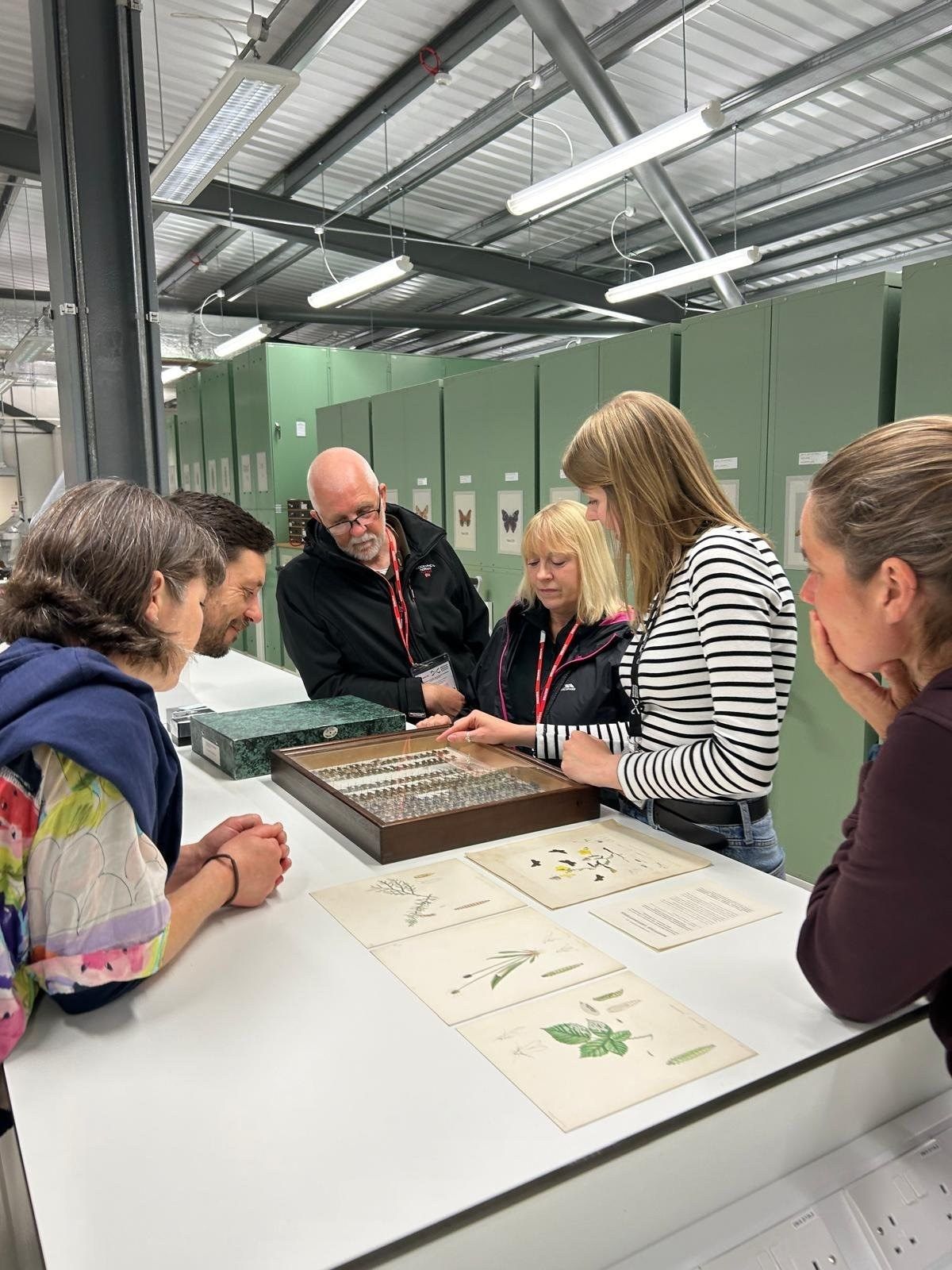
Ashleigh delivering a public tour at the collection. Image: © National Museums Scotland
Being a curator at the National Museum of Scotland is not a common career path, especially for someone working with insects. One of her main responsibilities is managing 2.5 million insect specimens, ensuring they are properly protected, well-organized, and accessible to preserve natural history. But her role isn’t confined to the museum walls – each year, she actively participates in fieldwork, collecting new specimens to expand the collection. So, she is very fond of bugs, whether they are dead or alive! Whether it is collected by her or donated by an amateur naturalist, Ashleigh carefully adds the new specimen to the database of the museum where millions of specimens are ready to be discovered.
Another crucial aspect of her job is public outreach, which she excels at through the effective use of social media, organizing public events, and engaging in teaching activities. Her favorite part of the job? It’s never boring. Visitors from all walks of life – students, artists, scientists, collectors, and fellow curators – bring a constant flow of fresh perspectives. For her, being part of this vibrant exchange is incredibly enriching.
Modernization of museum collections
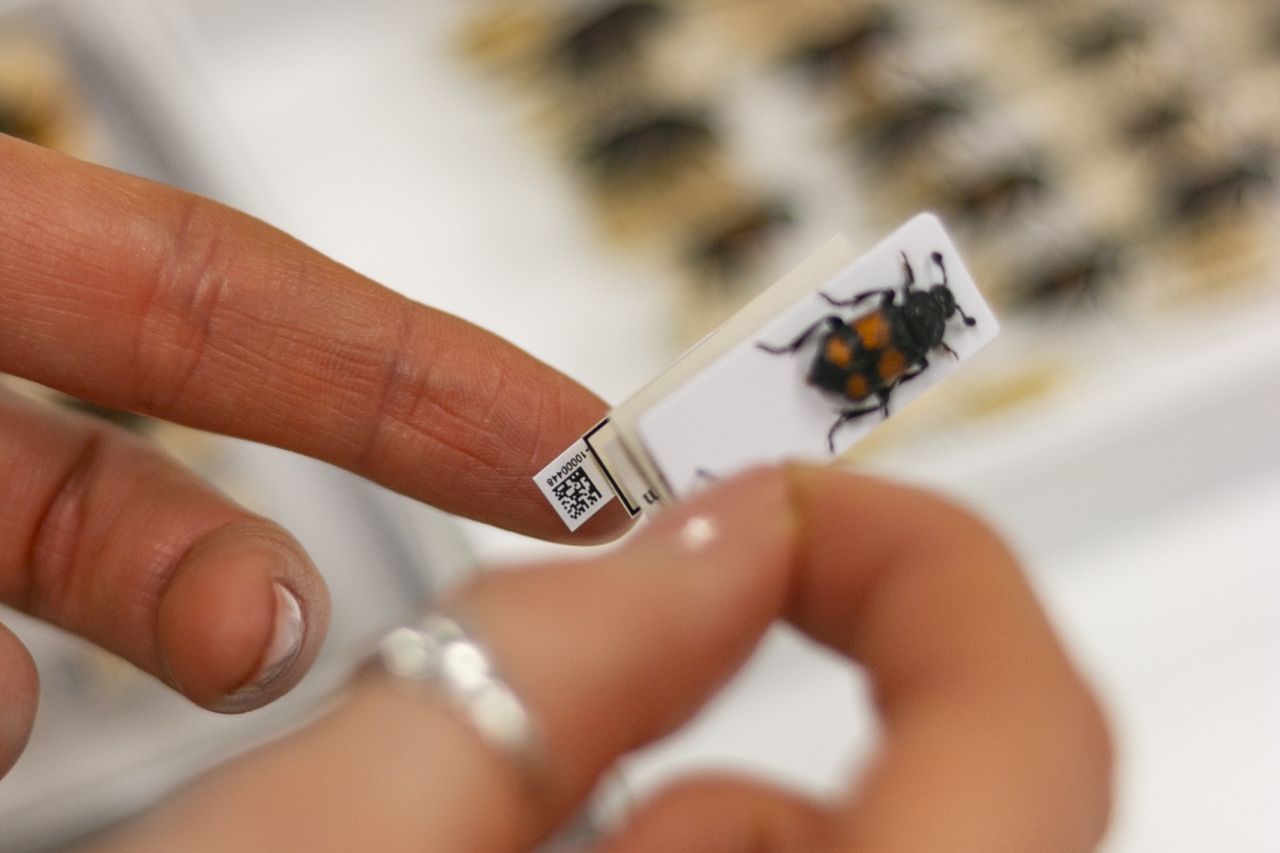
QR codes are widely used in entomology collections nowadays, allowing curators to rapidly retrieve necessary information. Image: © Molly Wilders
Another exciting development is the rise of artificial intelligence (AI) tools, which help amateurs identify insect species. However, Ashleigh points out that this is a double-edged sword. On one hand, AI provides curious enthusiasts with a starting point to learn about insects. On the other hand, it can give the false impression that identifying insects is simple, diminishing the appreciation for the expertise required. She emphasizes that some species can’t be accurately identified without dissection.
But there’s a promising solution: DNA.
Ashleigh is particularly excited about molecular tools like metabarcoding. This method allows scientists to analyze DNA from multiple species in a single environmental sample (e.g., soil or water), known as environmental DNA (eDNA), to identify organisms based on their genetic material. In the past, researchers had to rely solely on studying the physical morphology of insect specimens. Now, many labs request samples to extract DNA, which has revolutionized insect identification.
By building comprehensive DNA libraries, scientists can use eDNA to identify numerous insect species from environmental samples without ever needing to see or handle the insects themselves. What's more, while it used to be heartbreaking for entomologists to sacrifice entire specimens for DNA analysis, modern techniques allow for DNA extraction from a single leg, leaving the rest of the insect intact. As Ashleigh puts it, curators can now live with insect specimens that have only five legs – no harm done to the integrity of the collection!
Does Ashleigh recommend any apps?
AI is improving every day, and not taking advantage of this technology would be a missed opportunity. In the UK, Ashleigh actively uses iRecord, where she verifies entries for burying beetles and carrion beetles submitted by the public. This platform is incredibly valuable for tracking the distribution of various insect species across the country. Since she can’t collect all the specimens herself, iRecord helps her monitor population dynamics nationwide.
Beyond the UK, Ashleigh is a fan of iNaturalist, a platform where user submissions have led to remarkable discoveries. Entomology experts frequently visit these apps to explore species found in unexpected locations. In fact, these platforms have sparked new collaborations between taxonomists and citizen scientists, leading to the discovery of new species and even the publication of scientific papers.
What’s her favorite specimen?
When asked about her favorite specimen, she found it to be the hardest question to answer – there are just so many to choose from! But she did highlight one in particular: a tiny rolled ball of dung in the collection, carefully pinned. She can estimate when the specimen was collected based on the collector and the type of pin used, but identifying the specific dung beetle responsible requires a whole different level of expertise.

Mystery dungball pinned like insect specimens in the collection. Image: © Ashleigh Whiffin
The funniest part? She has an entire box of collected dung that, at first glance, looks like a box of truffles. Mouth-watering, right?
Moreover, they even have some specimens collected by Charles Darwin, how cool is that!
Words for young insect enthusiasts
Ashleigh emphasizes the importance of following your passion, whether it’s rocks, plants, or insects. Every small thing holds countless secrets waiting to be uncovered. One of the things that helped her most was connecting with local groups sharing the same passion. The older members in particular possess invaluable knowledge and experience that they’re eager to pass on to the next generation. This wisdom is priceless and shouldn’t be overlooked.
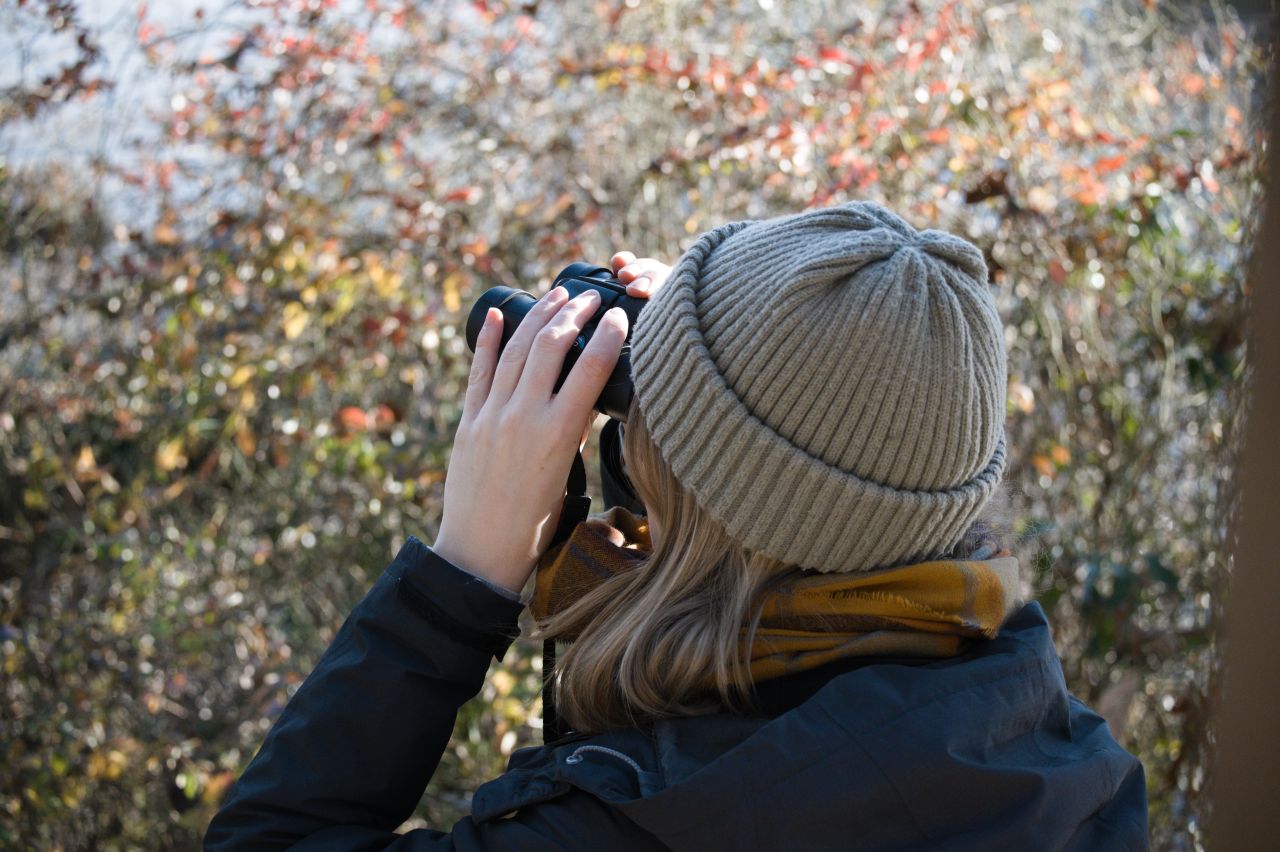
Ashleigh birdwatching in a state park, Virginia, USA. Image: © Eric Mueller
Another piece of advice she offers is to take photos. You don’t need an expensive camera to explore the macro world of insects – a simple clip-on lens for your smartphone will do the trick.
While her passion for insects remains as strong as ever, in the past 3–4 years, Ashleigh has also developed a keen interest in birds. She’s been participating in birdwatching activities in nature parks, discovering a whole new world that rivals her love for insects. Of course, many of the skills she’s gained from studying insects have seamlessly transferred into this new hobby.



